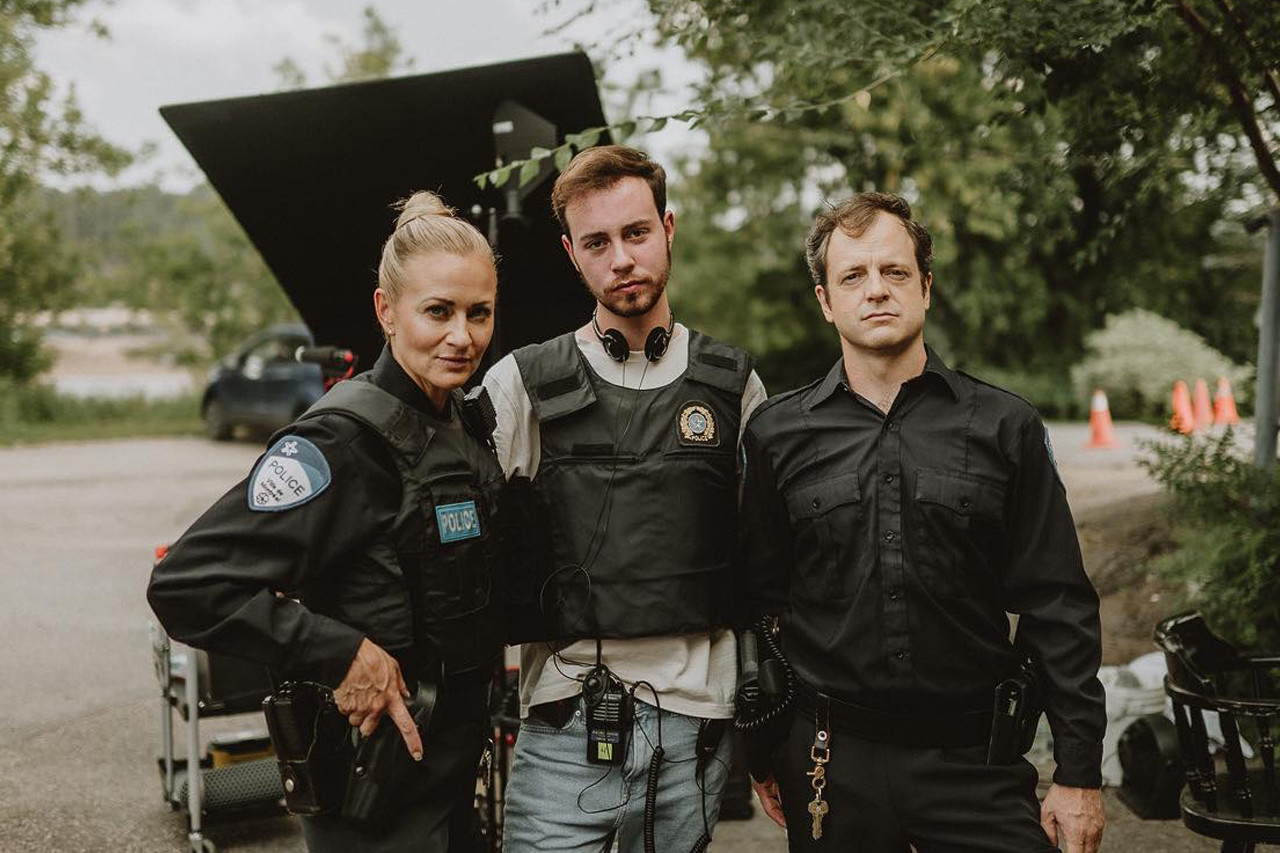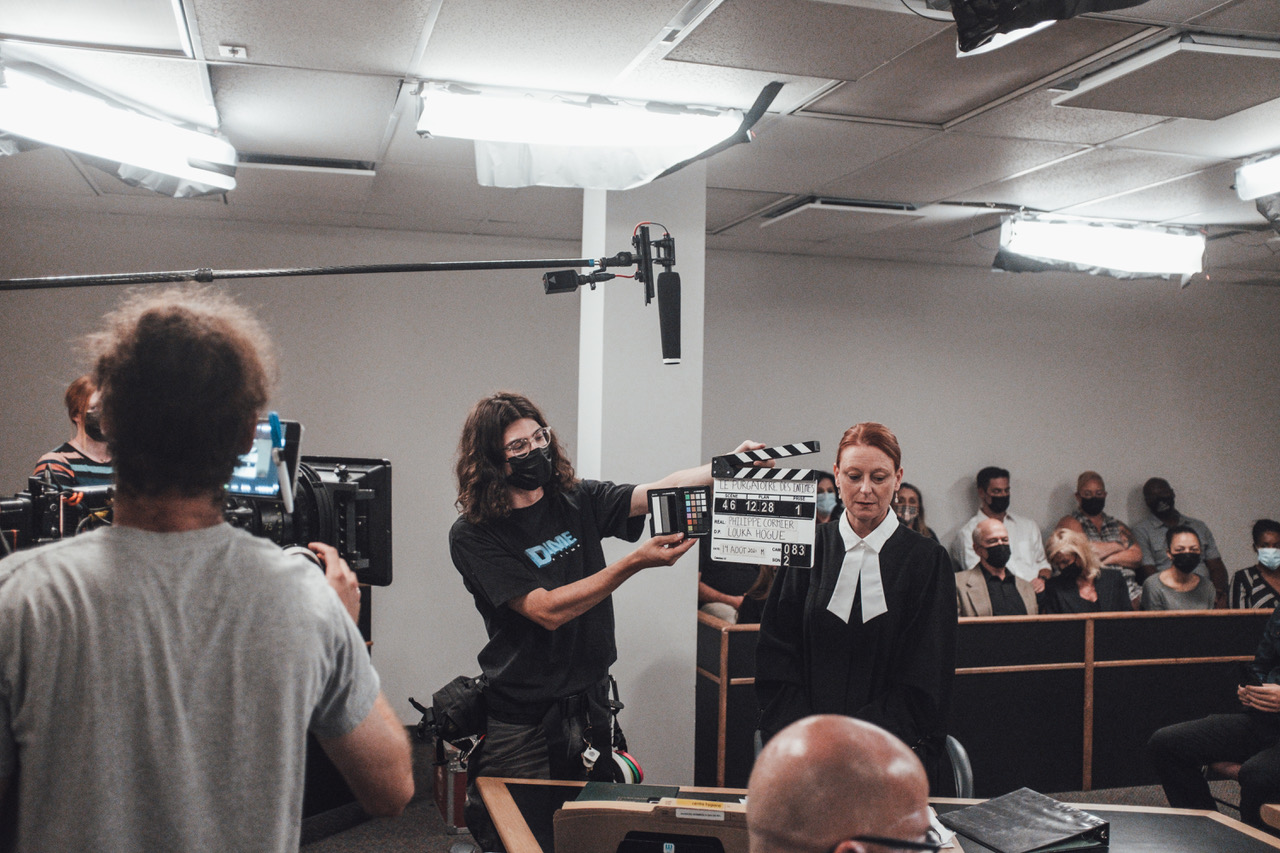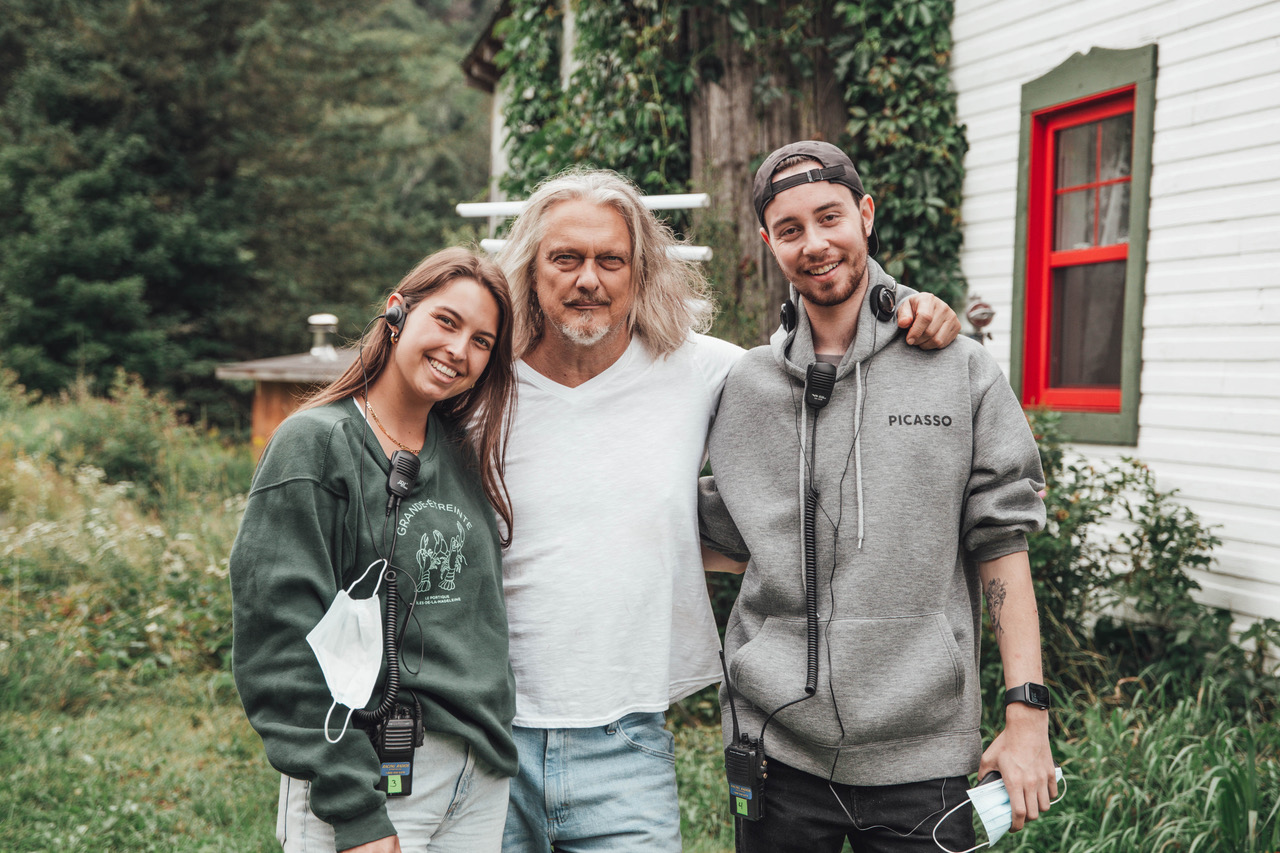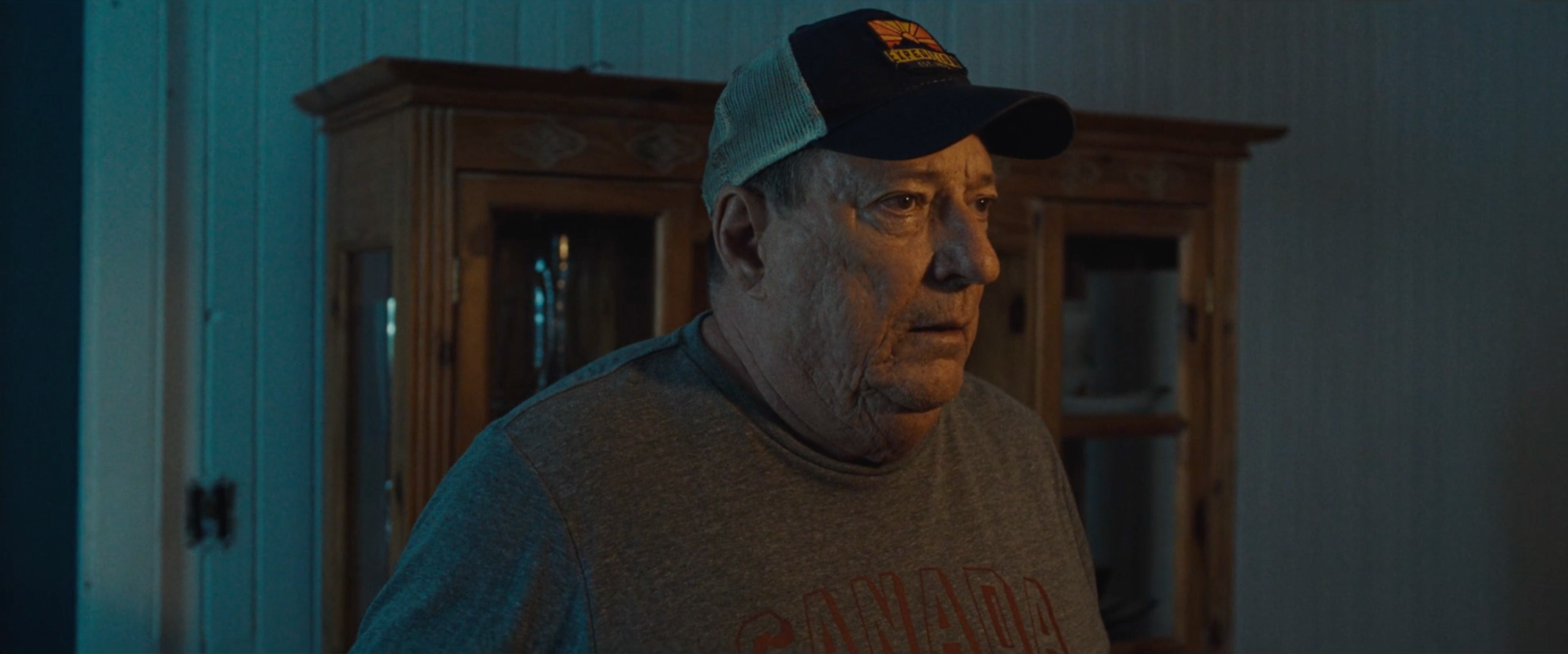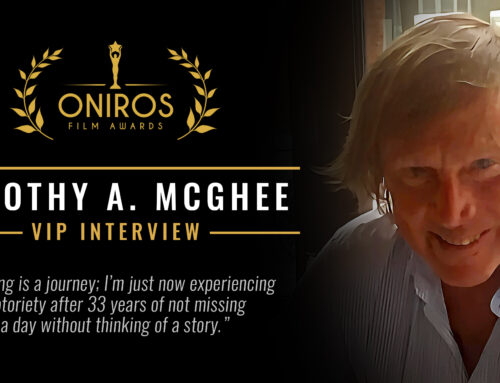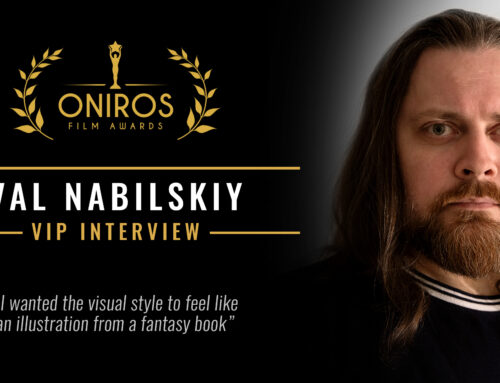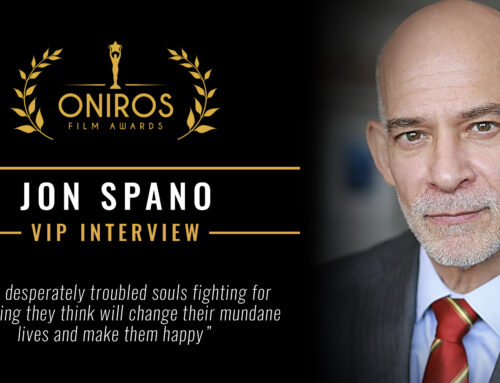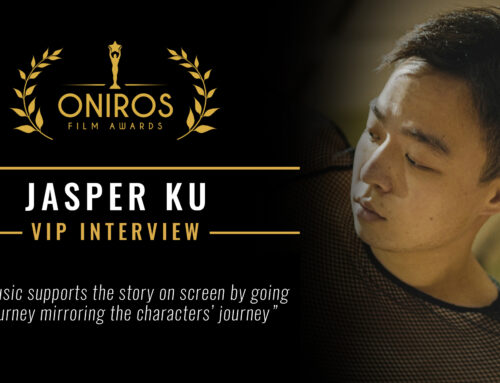BEYOND THE ONIROS FILM AWARDS®
VIP Interview with Philippe Cormier, writer and director of the feature film ‘Purgatory’
by Alice Lussiana Parente
Today we present Philippe Cormier, the talented director, producer, and writer of the feature film Purgatory. In this interview, we talk about Philippe’s inspirations behind the script, how colors and cinematography can immerse the audience in the protagonist’s experience, and the talented team and crew involved in this touching film. Enjoy!
1. What are the aspects you love the most about filmmaking?
Putting stories into pictures, of course. There are almost no limits and there is always something to explore. That’s what charms me the most.
2. You not only directed but also produced and wrote the script of Purgatory, how was this experience for you?
Of course, it’s a lot of work and the pressure is enormous. On the other hand, I always wanted to write and direct my stories, it allows me to be very invested in what I tell. On Purgatory, we changed some things in the script according to the actors’ feedback, so it was a very enriching experience to be a scriptwriter and a director at the same time.
3. What is the inspiration behind this script and the message you want to communicate to the audience through your movie?
I wanted to continue my exploration of mental health, a subject that comes up frequently in my work. This time, we follow someone who had a very difficult past and who is uncomfortable in society, in addition to being in mourning and suffering from mental instability. I wanted to address the problems of this man, but also the entourage who experiences these difficulties with him.
4. What were the most challenging scenes to film technically and emotionally?
From a technical standpoint, the trial scene was the most difficult. In addition to having been shot over 3 days, it required a lot of shots that we had to cover from several angles. From an artistic standpoint, the family scenes between the two brothers, Alain (Normand D’Amour) and Bernard (Jean-Pierre Bergeron), required more work to establish the relationship so we’d be able to see the emotion on screen. Furthermore, Alain’s scream in the motel room added another layer of difficulty for me. I had to trust Normand but when we got the desired result, I got shivers, and Normand said to me: “I think we got it!”
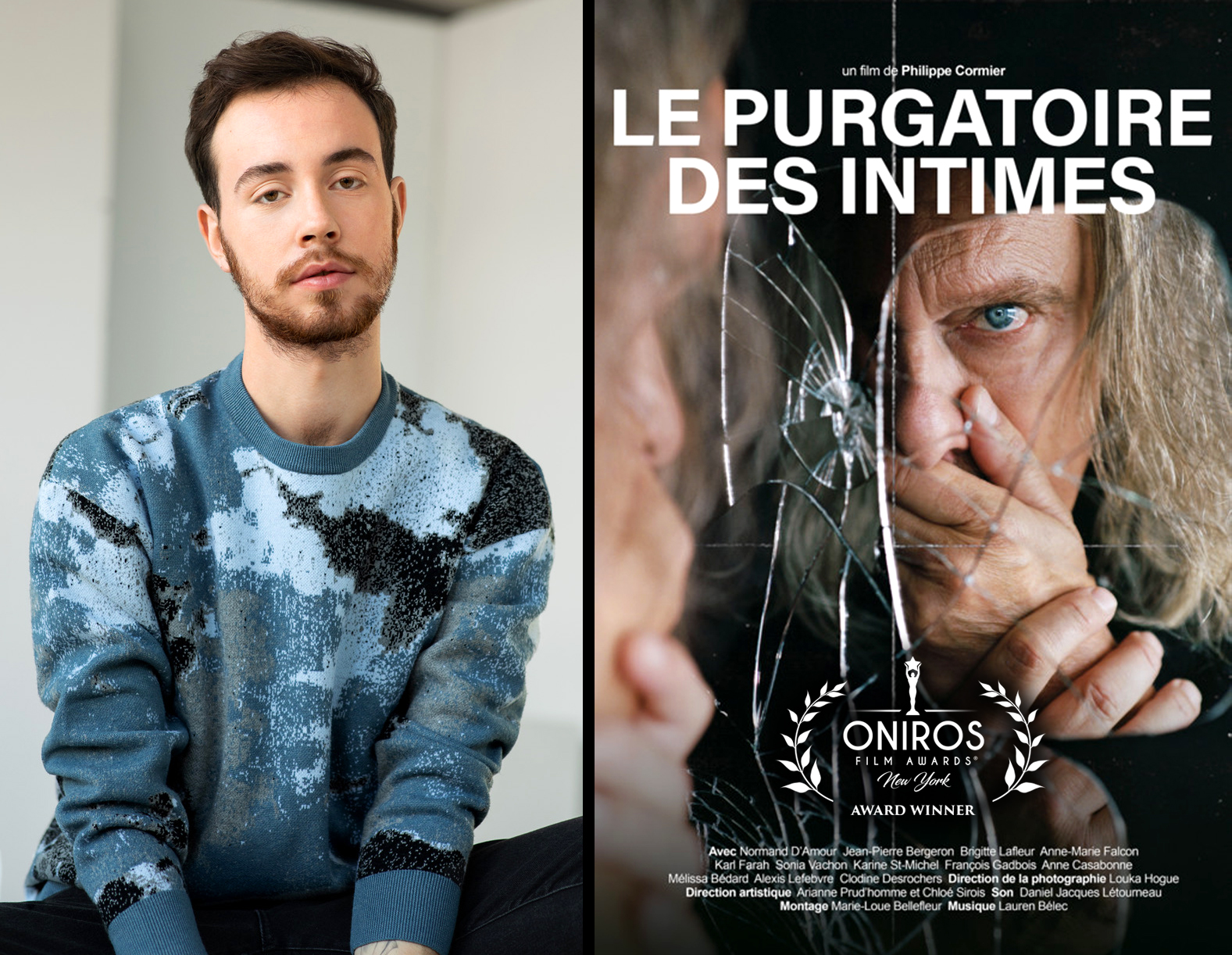
Philippe Cormier, director of ‘Purgatory’ and the official poster of the film
5. I particularly enjoyed the cinematography by Louka Hogue. Is this your first collaboration? How did you approach the lighting, especially in some of the most delicate scenes?
Louka signed the cinematography for my first feature film, Disturbed Heart during a one-day reshoot and I really liked his work. So, we got into Purgatory together, where we had a lot of discussion about images and lighting. Alain’s life is divided into 2 parts that we reflected with light in the film. First, the emotional scenes where Alain finds himself confused between Cherry and Evelyne, and when he’s more in his head, are more comforting and warmer. Then, the scenes where Alain needs to face reality, like during the interrogation, the trial and with his therapist, are all more blueish and harsher. Interestingly, Alain almost always has a side of his face that is more hidden, in the shadows.
6. What is the Purgatory in this film and what do you feel would be a Purgatory for you?
The world in which Alain lives is a Purgatory in itself. The concept of Purgatory is a metaphor where he gets a chance to tell his version of the events that made him that way, as well as address the really bad things that happened to him in the past. In real life, Purgatory is a concept of the Catholic religion in which an individual must expiate the sins of which he has not had sufficient penance to access paradise. Alain’s goal is to be understood while having to face the terrible things he’s suffered and did to others.
7. According to various psychology theories, colors can influence our perceptions of situations and emotions. You used very strong colors in your film, I specifically refer to the blue tones of the interrogatory scenes, the yellow of the flowers and the chips’ bag, and the warm orange in the more romantic scenes. I was wondering if these choices have a specific meaning to you and which emotions you were trying to portray in your film.
Colors are very important to me, whether in lighting or in decorative elements. Indeed, the orange tones wanted to express the romanticism of the scenes. I also wanted to deceive the viewer in a way, so they would think it was a happy place even though it ends up being all smoke and mirrors. The blue-toned scenes, especially the interrogatory scenes, wanted to reflect part of what Alain was going through; when feels trapped, even abused.
8. We already interviewed you for your previous feature film: Disturbed Heart. In this movie as well, the main protagonist struggles with life after trauma. Is this a coincidence or this is something you are particularly interested in as a director?
This is something that particularly interests me. When a person, regardless of gender or age, experiences trauma, their life is changed forever. As a director, I like to focus on that turning point moment in someone’s life where they struggle with identity crises and mental health problems.
9. It’s the first time that I have seen in a movie a pregnant sex worker and the character of Peggy is very interesting because through her pregnancy she is trying to find a better life for herself and her baby. What did you want to communicate through this character? Do you think that the scene between her and Cherry Blossom and Peggy gives us a hint about Cherry’s future events?
The film had a component dealing with sex work and it was very important for me to demystify this universe by introducing credible characters. I wanted to portray the realities that actually exist in this industry. The production crew had meetings with sex workers and the actresses were also able to meet with them to build their characters. The character of Peggy is one of a strong woman who has decided to accept her body despite her changes and an industry very focused on body image. As for the scene between Cherry and Peggy, I believe it can give a clue to future events by showing how empathetic and sensitive Cherry is towards the people around her which eventually leads to her premature demise.
10. When working on a film, do you like to collaborate with the same team and cast or do you prefer to start fresh for each project? I recognized Rebecca Gibian and Anne-Marie Falcon from your previous feature Disturbed Heart.
I love working with the same people. We know how to work together and develop a very strong chemistry over the projects. Rebecca Gibian, who was my lead actress on Disturbed Heart, came in with a very original audition proposal for Purgatory. It was obvious that I had to work with her again. There is also Anne-Marie Falcon, who went from the role of a neurotic and overwhelmed woman in Disturbed Heart to Katherine, a rigid lawyer. In my two films, we also find Karl Farah, Roxane St-Gelais and Gabrielle Marion. Obviously, I also like to find new talents and I try to balance my casting with that.
11. Acting-wise, the film is very strong. How did you work with your actors?
Honestly, I’m still very proud and impressed with my cast today. Several of my actors are in high demand in Quebec or are well-known to the general public, including Normand D’Amour, Jean-Pierre Bergeron, Karl Farah, Brigitte Lafleur, Sonia Vachon, Mélissa Bédard and Clodine Desrochers. I also made the decision to work with influencers, to attract another type of audience and I also wanted to work with young actors coming out of theater school. We then had to squeeze all these people’s schedules in a 22 days shoot. To achieve the result of the film, we had several days of rehearsals so that the actors could get to know each other and help each other build their characters. It was a very enriching experience.
12. SPOILER ALERT: Normand D’Amour does a great job at making the audience understand Alain’s struggles and it’s particularly hard to bring the audience to empathize with a murderer. This comes from good writing, directing, and acting. How did you work on this specific aspect with Mr. D’Amour? And why does Alain build an imaginary reality for himself? Is he running away from his past or foreseeing his future?
Normand D’Amour is a legend! We had prep meetings for the character of Alain and several phone conversations to go over the acting intentions. Normand arrived with a list of ideas that really allowed me to do incredible upstream work. All the work went into building this complex character, including the choice of costumes, hairstyles. He creates an imaginary world to flee his past, which troubled him, by imagining the woman he would have dreamed of having as a mother, but nightmares unfortunately take over his dreams.
13. What’s the best advice you would give to an aspiring filmmaker?
Take risks and don’t be afraid to dare. Do not hesitate to ask questions and don’t be discouraged after a refusal. It’s a tough industry, but you can do it!
14. What’s next for you? What are you working on right now?
After Purgatory, I shot a short film about insomnia, entitled Lullaby of Misfortune, which has just been sent to festivals. With my agency, I am working on two new projects, a short film about overpopulation and a feature film about revenge. I can’t wait to say more!
